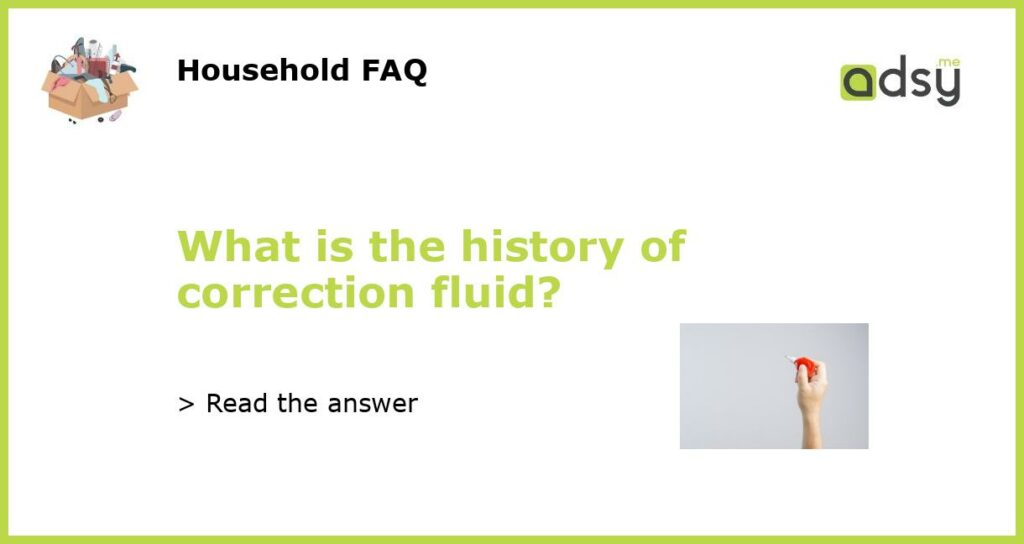The Invention of Correction Fluid: A Brief History
Correction fluid, also known as Liquid Paper, is a product that has been used for decades to cover up mistakes made while writing or typing. It was invented by Bette Nesmith Graham, a single mother who worked as a typist in the 1950s. Graham was constantly making mistakes while typing, and found it frustrating to have to retype entire pages just because of a few errors. So she began to experiment with different types of paint to find a way to cover up her mistakes and keep typing, even after making an error.
The Rise of Liquid Paper: From Graham’s Kitchen to the Office Supply Store
After a few years of tinkering with different mixtures of paint and various solvents, Graham finally perfected her creation. She called it “Mistake Out” and began to use it in her office, where it quickly caught on with her coworkers. Realizing she had stumbled upon a product that had potential to be used in offices all over the country, Graham started her own company, which she called the Liquid Paper Corporation.
The Impact of Correction Fluid on the Typing Industry
Once Liquid Paper hit the market, it quickly became a staple in offices all over America. Secretaries and typists alike used the product to fix mistakes, and the Liquid Paper Corporation became a multi-million dollar business within a few short years. The invention of correction fluid also had a significant impact on the typing industry as a whole, as it allowed typists to type faster and more efficiently, without worrying about making mistakes that would require them to start over from the beginning.
The Evolution of Correction Fluid: From Paint to Pen
Over the years, correction fluid has undergone several changes in its design and composition. Early versions of the product were made from a mixture of white paint and solvents, which were applied to the paper with a brush. Later versions were made in the form of a pen, which made it easier to apply the correction fluid with more precision. Today, correction fluid is most commonly sold in the form of a tape-like strip that can be applied directly to the paper. This evolution in design reflects the continued demand for an easy-to-use, high-quality correction product.
The Future of Correction Fluid: A Necessity in the Digital Age?
In today’s digital age, the need for correction fluid has diminished significantly, as most mistakes made while typing can be easily corrected with the press of a button. However, there are still industries that rely heavily on typists and writers, such as publishing and legal work, where the use of correction fluid is still a necessity. As long as there is a need for people who must type or write long documents, there will be a need for a product like correction fluid.




![Snopake 13139 Hi-Tech Correction Fluid,white, 20 ml Bottle [Pack of 10]](https://m.media-amazon.com/images/I/41JfelYRftL.jpg)

